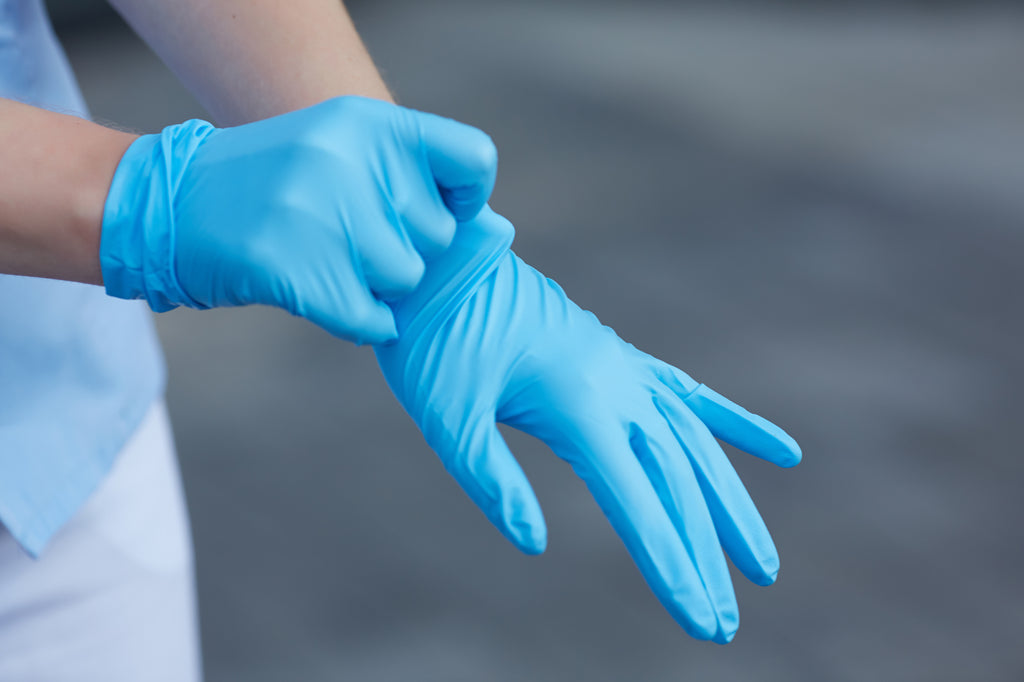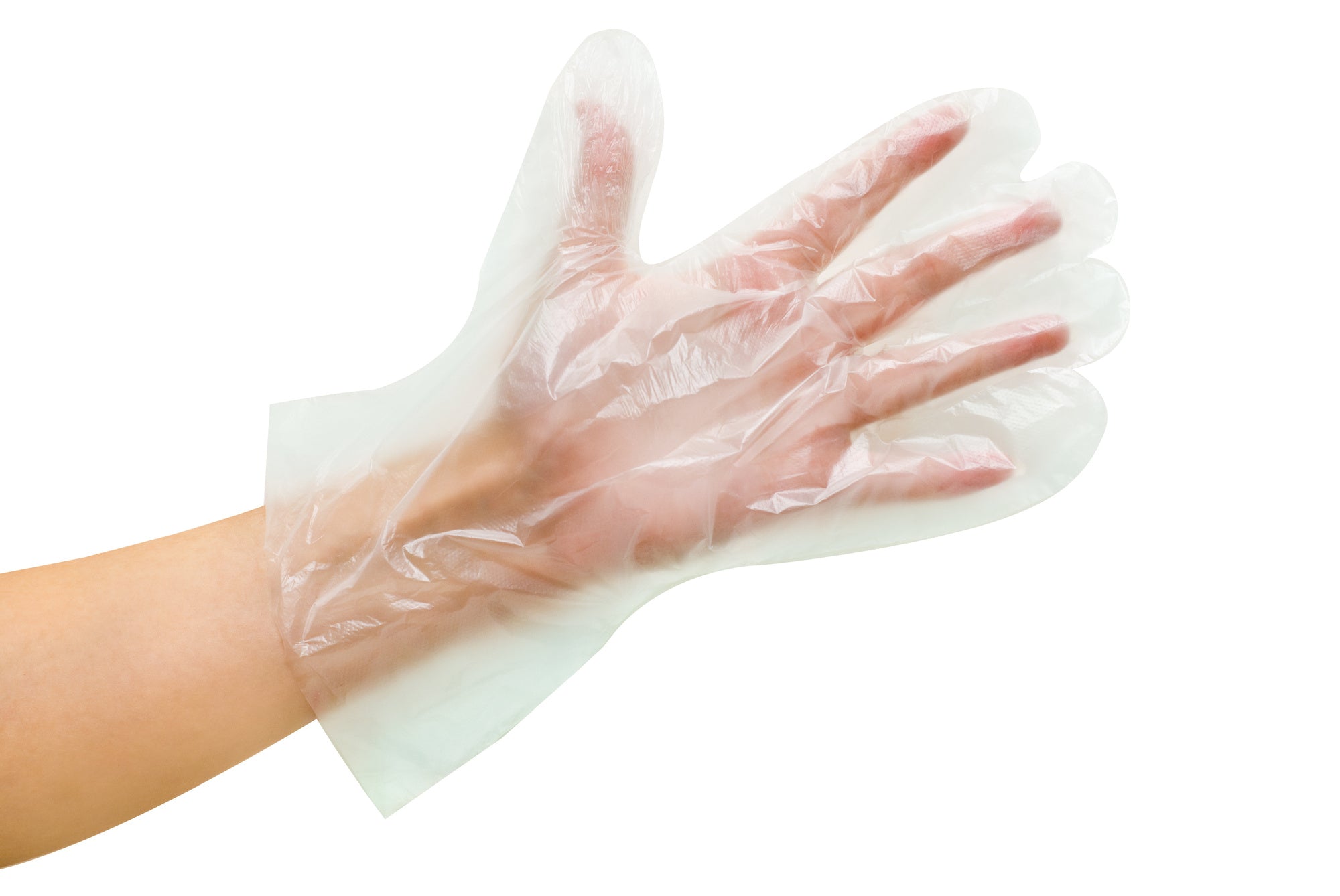
A Guide to Choosing the Right Medical Gloves
The word glove comes from Old Norse, 'glofi'. The origin of the word suggests that Norse warriors or Vikings used gloves. From early times gloves have been made for a variety of purposes and this is as true of medical gloves today.
The range of medical gloves available is huge. Choosing the right gloves for the right task can be bewildering. The options include powdered, non-powdered, latex, nitrile and more.
Read this guide to choosing the right gloves. It will de-mystify the array of tasks, materials and performance considerations.
Choosing Medical Gloves
When choosing medical gloves you have a choice between different materials. The three main options are latex, nitrile, and vinyl. There is a fourth option but more on that later.
First, you need to understand what properties and function you need from the gloves. This depends on the task you need the gloves for.
Each of the 8 properties described below will suggest one or more materials or type of glove. Understand what property you need and you will be able to determine the right glove for the job.
1. Resilience And Strength
Whatever task you are using the gloves for they must not tear or split. Nitrile and latex medical gloves are tougher than vinyl gloves. This durability makes them suitable for tasks that involve more stress. Extra resilience comes with thicker gloves although this does mean a loss of sensitivity or feeling.
2. Feeling And Sensitivity
If the medical task requires handling instruments or feeling for a vein then you need sensitivity. Close fitting and stretchy latex gloves are the best for this type of task.
Thin nitrile medical gloves can also perform very well but they do offer less sensitivity than latex gloves. Vinyl gloves are not ideal for these tasks.
3. Snug Fit
A glove that fits well with no loose areas but with some stretchiness provides a good balance between comfort and dexterity. When it is important to be able to manipulate the fingers easily the best material is latex. A latex medical glove is likely to offer some flexibility in sizing too as the glove will stretch to fit even when a smaller glove is really needed.
A thin nitrile glove will also provide more stretch, comfort, and a snug fit but is less likely to tolerate wrong sizing.
Vinyl medical gloves are much less stretchy and have to be the right size if they are not to either be too loose and wrinkly or to too tight and split.
4. Resistance to Tearing
If gloves are not stretchy then they can be prone to tearing on donning or during use. Latex and nitrile are tear resistant especially around the cuff. In an environment where there is a risk of puncture, once punctured nitrile is prone to splitting.
All latex and nitrile gloves are treated inside to make donning easier and reduce tearing.
If you need resistance to tearing and puncture, vinyl gloves are not the best option. Vinyl gloves do not have any treatment inside to help when putting them on, so this is a risk especially if they are worn tightly.
Remember any glove is at risk of damage if the wearer has long or sharp fingernails or jewelry.
5. Grip
Tasks that involve the use of tools, instruments or small objects will need gloves with some degree of gripping ability. There are tasks where holding or moving patients is required. In these situations, too much grip may actually be a problem and cause patient discomfort or even harm.
Latex gloves offer the most amount of grip as the material is naturally tacky. Some nitrile gloves, though less grippy, do have textured surfaces for more grip. Some gloves offer textured fingertips which can be a good compromise option.
Vinyl gloves may not be useful where grip is needed but are ideal when handling patients. The smooth surface will not adhere to skin so is less likely to cause discomfort or harm.
6. Resistance to Chemicals
It is rare to need resistance to corrosive chemicals in a medical environment. In fact latex, nitrile and vinyl gloves are not specially designed with this property in mind.
Nitrile gloves have some resistance to a range of chemicals but latex is likely to respond poorly to oil-based chemicals.
Check PPE certifications if chemical resistance is specifically required. There are gloves designed especially for applications such as chemotherapy. Carry out risk assessments for the chemicals and context required.
Vinyl gloves are generally not suitable when chemical resistance is needed. They can be used in basic cleaning operations with mild detergents.
When working with food, chemicals in the glove might leach out. Look for gloves marked suitable for use with food.
7. Allergy Risk
Some people have an allergic reaction when using latex gloves. The symptoms can range from severe reactions to mild irritation. The reaction can be either caused by direct contact with the latex glove or in some cases by powder from the glove carried in the air.
Sufferers from a latex allergy should use nitrile or vinyl gloves. There are latex gloves that have been treated to reduce the allergic effect so these are an option to try.
8. Protection From Cross-Infection
Protection from cross-infection may be the primary purpose for wearing medical gloves but not all gloves offer the same level of protection.
Latex and nitrile gloves provide excellent biological barrier properties. Vinyl gloves provide less protection and so are suitable for lower risk medical tasks. Bear in mind that the resilience, strength, and resistance to tearing are all also relevant here.
A glove that offers good protection from cross-infection when intact is useless if it is not robust enough to cope with the task or working environment.
Something New
While the three main materials, latex, nitrile, and vinyl, discussed in this article are the most commonly used, there is a new product to consider.
Chloroprene offers an interesting alternative. It has better puncture resistance than latex but the comfort and fit of a natural latex product. With comfort, strength and excellent barrier protection, consider them for surgical and medical applications.
Making Your Choice
When choosing personal protective equipment (PPE) such as medical gloves the basis should be a risk assessment. The properties of the gloves are relevant in so far as they mitigate a risk identified in the risk assessment.
There is a medical glove for every situation and task. Decide what properties you need and consult the specification of the product before purchasing.
Need more information or are ready to buy medical gloves? Talk to the people who know about disposable gloves at My Glove Depot by clicking here.





